It looks like you're using an Ad Blocker.
Please white-list or disable AboveTopSecret.com in your ad-blocking tool.
Thank you.
Some features of ATS will be disabled while you continue to use an ad-blocker.
1
share:
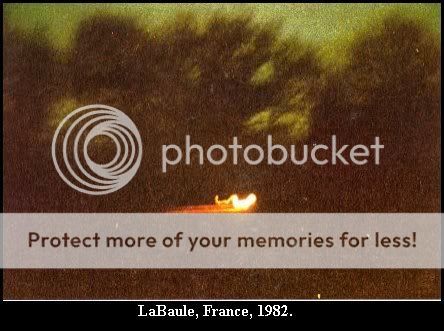
In 1977, the CNES Director General set up the Geipan research group to pursue studies initiated by a CNES engineer as a personal project.
Its mandate was simple: conduct research into UFOs (as they are commonly called). The group’s work was overseen by a scientific advisory board.
Geipan continued its research until 1988, when it was superseded by Sepra. As well as UAPs, the new unit also monitored artificial atmospheric re-entries, i.e. debris from space missions falling back to Earth.
In 2000, Sepra refocused on the original mission of UAP research, albeit with limited resources. In 2001, the Director General requested an audit to help decide on the future of this CNES department.
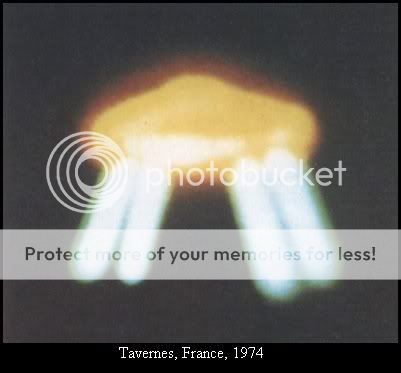
Since 1977, Geipan and then Sepra have collected close to 6,000 reports from eyewitnesses, mostly on the ground but about 6% who observed phenomena from aircraft.
Once reported events have been grouped into observation cases, about 28% remain unexplained after investigation and analysis.In its first five years, Gepan developed scientific methods for collecting and analysing interdependent data. Since the 1980s, a rigorous scientific approach has also been applied to UAP-related investigations. This approach is still used today.
Through agreements and conventions between Geipan and its partners (authorities, researchers, etc.), the unit has access to the information sources and observable data it needs to conduct investigations.
The material dates as far back as 1954. Over the next several months, the space agency will post it to enhance scientific research seeking to explain what the French government calls "unexplained aerospace phenomena.
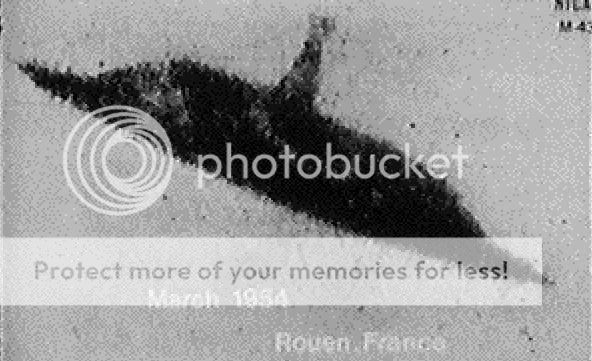
Patenet said that among the 1,600 cases to be opened to the public, a few dozen are very intriguing and can be called UFOs.
The data that we are releasing doesn't demonstrate the presence of extraterrestrial beings," said Jacques Patenet, who heads the Group for the Study and Information on Unidentified Aerospace Phenomena, the space agency's UFO investigative team. But it doesn't demonstrate the impossibility of such presence either. The questions remain open.
Most of the cases were determined to be caused by atmospheric anomalies or mistaken perception of such things as airplane lights, or to be hoaxes. One case file described how investigators proved a man was lying about being abducted by aliens when blood tests failed to show he had recently experienced the weightlessness of space travel.
SOME FAMOUSE CASES
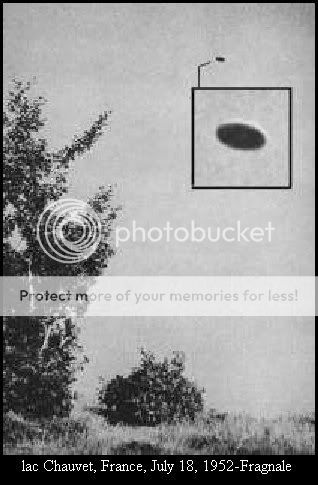
LAC CHAUVET, France 1952: Mr. Fregnale electrical engineer of Le Puy, was hiking in the area of Bessem Friday in search for geological study, near Lake Chauvet, when he saw a kind of disc that crossed the sky from West to East. He took 4 photos.
The latest study of the 1952 negatives was published by Dr. Guerin in 1994:
"I had the time to take four shots very quickly. I saw the machine approximately during 50 seconds and after having taken the photographs I observed the craft with binoculars. According to my observations and calculations I made afterwards, if the saucer were at 3.000 meters it was going at approximately 300 meters per second. If it were at 8.000 meters its speed was larger obvioulsy and could reach 800 meters per second. I heard absolutely no noise.
"... We have demonstrated that the photographs showed a disk-shaped object located at a large distance in the sky and, thus, having large dimenddimendimensions ... The disk was flying along a straight and horizontal trajectory, keeping an inclination to the horizontal plane, about the axis trajectory and at an angle which remained between about 5 degrees and 12 degrees. The eccentric spot remained aligned along this axis during the observation, which makes unlikely the possibility of forgery by means of a model hung at the end of a wire or thrown into the air"
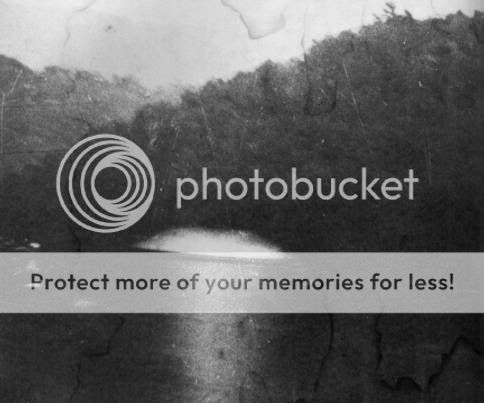
Even though photographed during daylight, there is a noticable luminous "ion cone" under the saucer, usually visible at night.
Indeed this "ion cone" effect is commonly reported for saucers. As Paul Hill points out in his book, apparently air ionization is a secondary effect of the force field used for the UFO's propulsion system
These files are here to be viewed www.ufoevidence.org/topics/Gepan-Sepra.htm
new topics
-
Australian PM says the quiet part out loud - "free speech is a threat to democratic dicourse"...?!
New World Order: 23 minutes ago -
Ireland VS Globalists
Social Issues and Civil Unrest: 54 minutes ago -
Biden "Happy To Debate Trump"
Mainstream News: 1 hours ago -
RAAF airbase in Roswell, New Mexico is on fire
Aliens and UFOs: 1 hours ago -
What is the white pill?
Philosophy and Metaphysics: 3 hours ago -
Mike Pinder The Moody Blues R.I.P.
Music: 3 hours ago -
Putin, Russia and the Great Architects of the Universe
ATS Skunk Works: 6 hours ago -
A Warning to America: 25 Ways the US is Being Destroyed
New World Order: 11 hours ago
1
